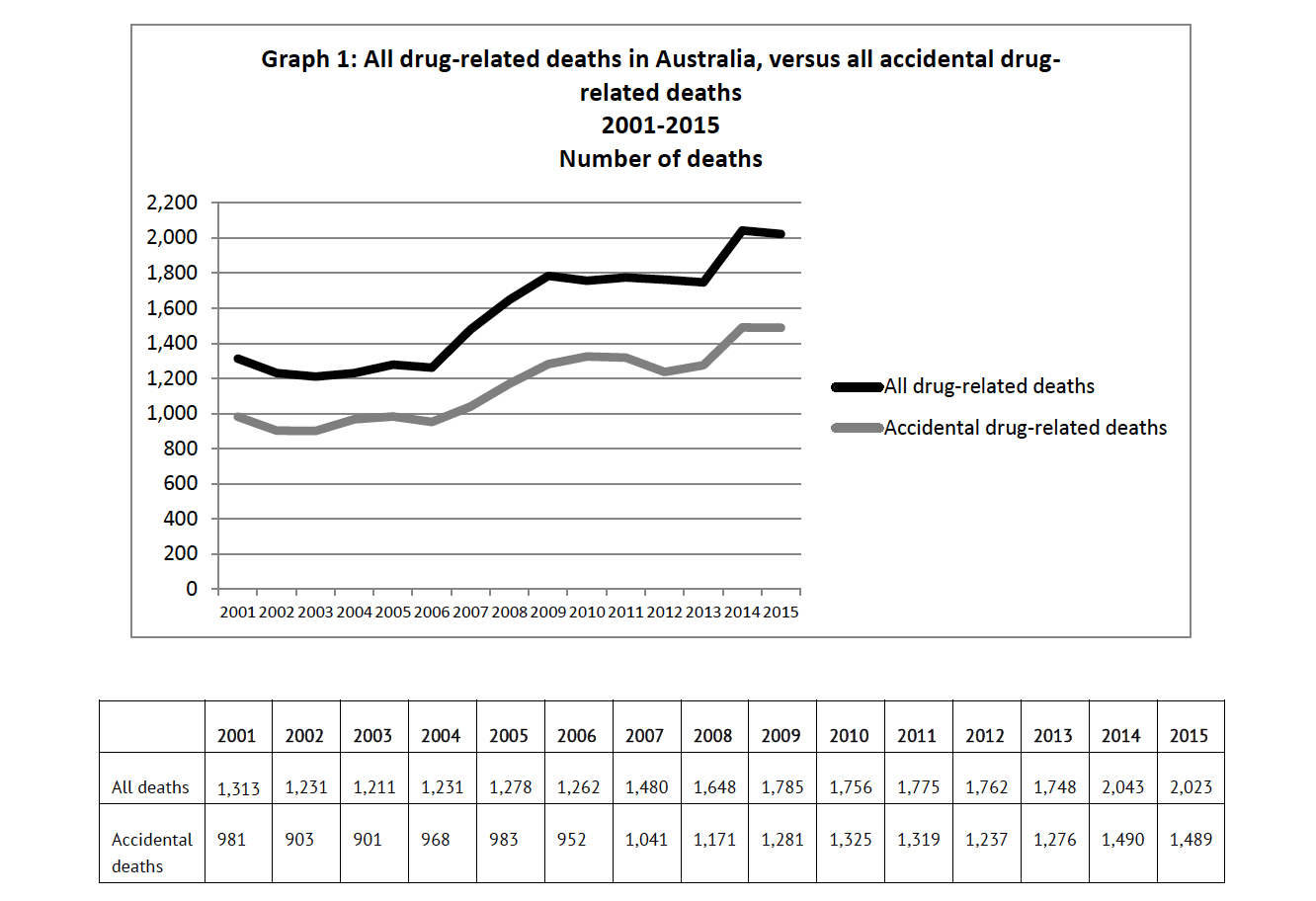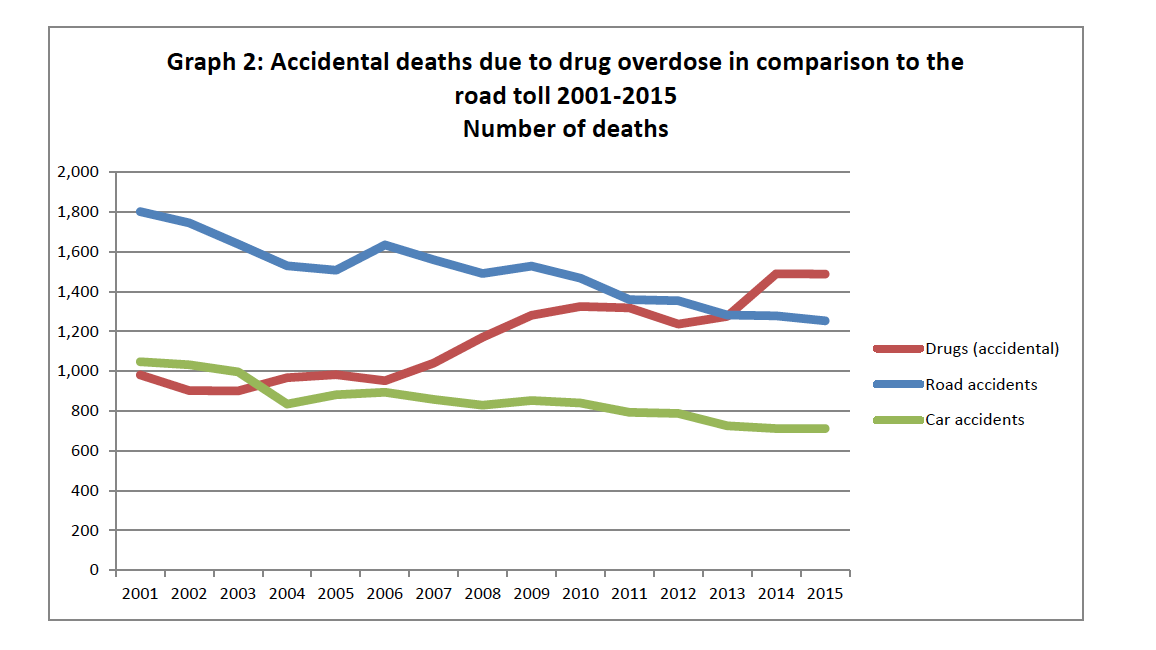Experts warn the number of accidental deaths due to drug overdose in Australia continues to increase rapidly.
A report conducted by Penington Institute revealed that more than 2,000 people die of overdoses each year.
CEO of Penington Institute, John Ryan, says “overdose deaths are growing rapidly. This is a problem that needs to be taken seriously, today.”
The most recent data collected revealed that in 2015 there was a total of 2,023 drug-related deaths in Australia. This figure shows a 64 per cent increase in drug-related deaths compared to 2001.
“The data illustrates that the real front line in Australia’s overdose crisis is often the household medical cabinet,” says Mr Ryan.

(Graph courtesy of Australia’s Annual Overdose Report 2017)
Of these drug related deaths, more than half were due to accidental overdoses. 1,489 people lost their lives in 2015 as a result of mistaking prescribed medication. This figure has steadily increased over the last 15 years and experts are concerned it will continue to rise.
The main cause of accidental overdoses is pain relief medication known as opioids. Oxycodone, morphine, or codeine, which can all be purchased over-the-counter – are the most common drugs responsible for these deaths.
Mr Ryan says these household medications are ‘often taken without any awareness of the potential overdose risk that they pose.’

(Graph courtesy of Australia’s Annual Overdose Report 2017)
Marilyn Smith was unaware that she had become addicted to a painkiller in 2015.
“I was prescribed Oxycontin to treat severe neck and back pain and started to rely on the drug to relieve pain,” she says.
Doctors had warned Marilyn to take Oxycontin for no more than 5 consecutive days. However, the medication worked so well that she began taking it whenever she experienced back and neck pain.
“When my script ran out, I thought I would be alright to go back to taking something not as strong, like Panadol,” she says.
Oxycontin is a slow release medication, so when Marilyn stopped taking the drug altogether, she began experiencing severe withdrawal symptoms.
She says her body went into shock and she began experiencing body sweats, trembling, severe headaches and vomiting.
“My body was craving the drug,” she says.
Marilyn spent three months in hospital being treated for addicted.
She was put on more medication to control the side affects and the dosage was slowly lowered every few days before she was able to be completely drug free.
Marilyn believes if she hadn’t of stopped taking the medication and became aware of her addiction she may have overdosed.
“I was already taking more [medication] than I probably should have been because of how affective they were. My pain stopped when I took them so of course I would have kept taking them,” she says.
Alarming statistics from the 2017 report reveals that twice as many people lose their lives as a result of accidental overdose as they do in a car accident each ear.
Experts are saying more needs to be done to prevent these incidents.

(Graph courtesy of Australia’s Annual Overdose Report 2017)
“We need better community education for people who are experimenting with drug use before they become addicted,” says Mr Ryan.
“Governments can’t solve this problem on their own – responsibility needs to be shared between the community and government.”
In addition to education, Mr Ryan believes an important aspect of lowering these statistics is to change the stigma around drug use.
“The stigma in relation to drug use and drug addiction is one of the great barriers for people who are experiencing problems, whether they are family member or individuals with drug problems,” he said.
The data collected from the 2017 report is ongoing as investigations and coroner’s reports can take several years to finalise. As a result, the 2,023 drug related deaths that have already been recorded for 2015, is expected to rise.
(Feature photo: Mikaela Ortolan)







